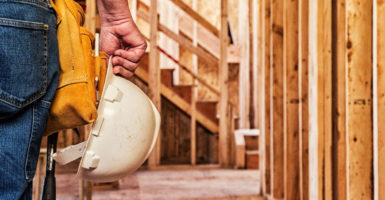New data show that protectionism is taking a toll on the confidence of homebuilders.
Last month, homebuilder confidence hit its lowest reading since November 2016, according to the National Association of Home Builders/Wells Fargo Housing Market. The index fell two points from 66 to 64, upsetting economists’ predictions that confidence would actually improve.
While anything above 50 is considered positive, this drop in homebuilder confidence is yet another example of the negative effects of protectionism.
As National Association of Home Builders Chairman Granger MacDonald explained: “Our members … are growing increasingly concerned over rising material prices, particularly lumber. This is hurting housing affordability even as consumer interest in the new-home market remains strong.”
The rising prices of lumber, steel, and other intermediate goods should not come as a surprise. In May, the Commerce Department announced tariffs of up to 24 percent on imports of softwood lumber from Canada.
The administration is also currently conducting an investigation of steel imports, arguing that they may be a threat to national security. Steel prices are already on the rise, and additional restrictions will only raise prices more.
Tariffs’ wide-ranging impact on home prices is already becoming apparent. According to the U.S. Census, the median price of a newly built home sold in May rose to a record $345,800.
Rising costs for building materials are making it more expensive for the construction industry to make a comeback and more difficult for families to build a new home or even renovate an existing one.
To make matters worse, the rise in costs for wood and steel has been matched by a simultaneous rise in prices for land and skilled labor. It is only natural that homebuilders would see less reason to be optimistic about future business.
The Trump administration argues that foreign companies and governments are cheating American manufacturers. But as homebuilders’ new predicament shows, a more plausible narrative is that American consumers and industries are being cheated by their own government’s protectionist policies.
If the administration and Congress want to restore Americans’ confidence, they can start by removing harmful tariffs that make it more expensive for industries like construction to do business.






























